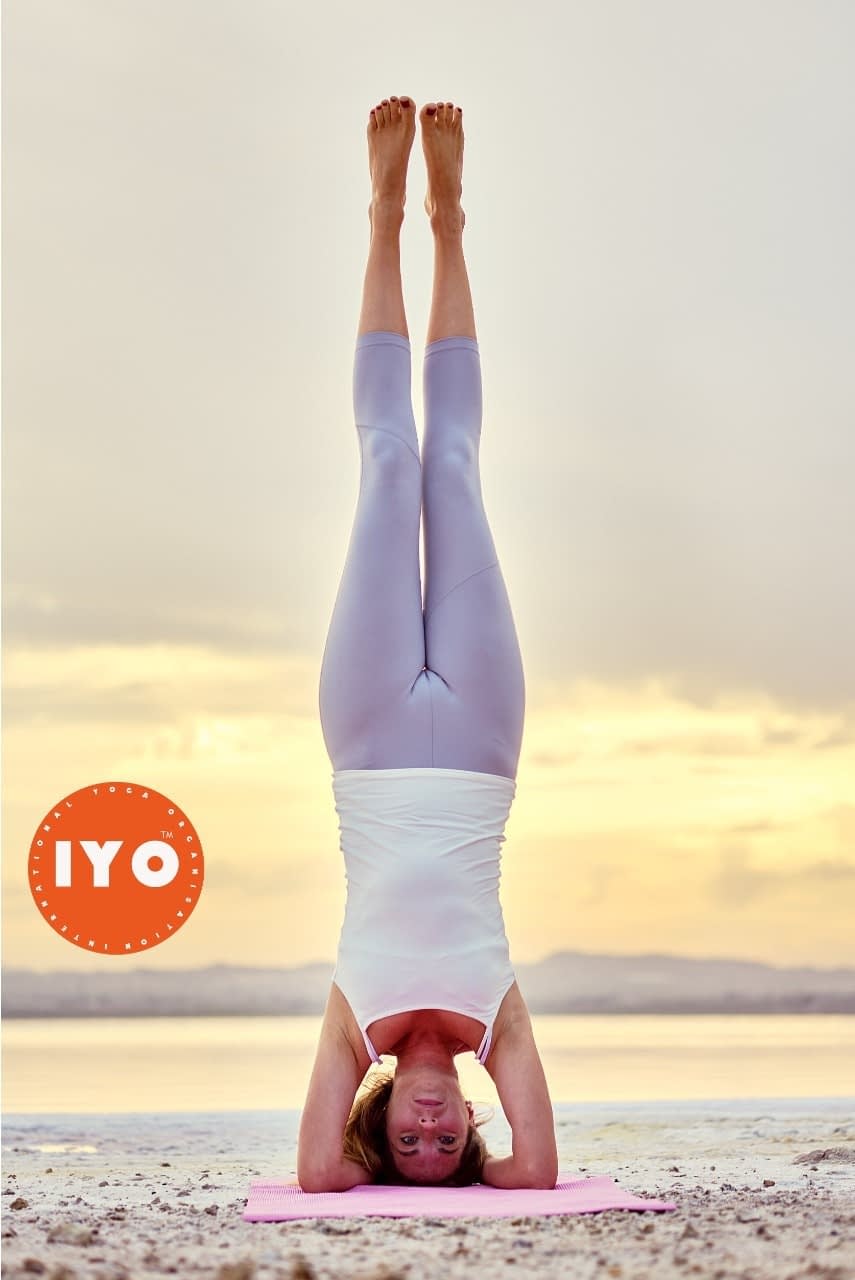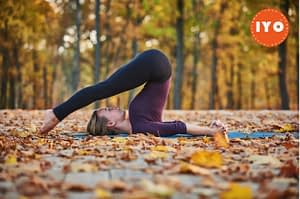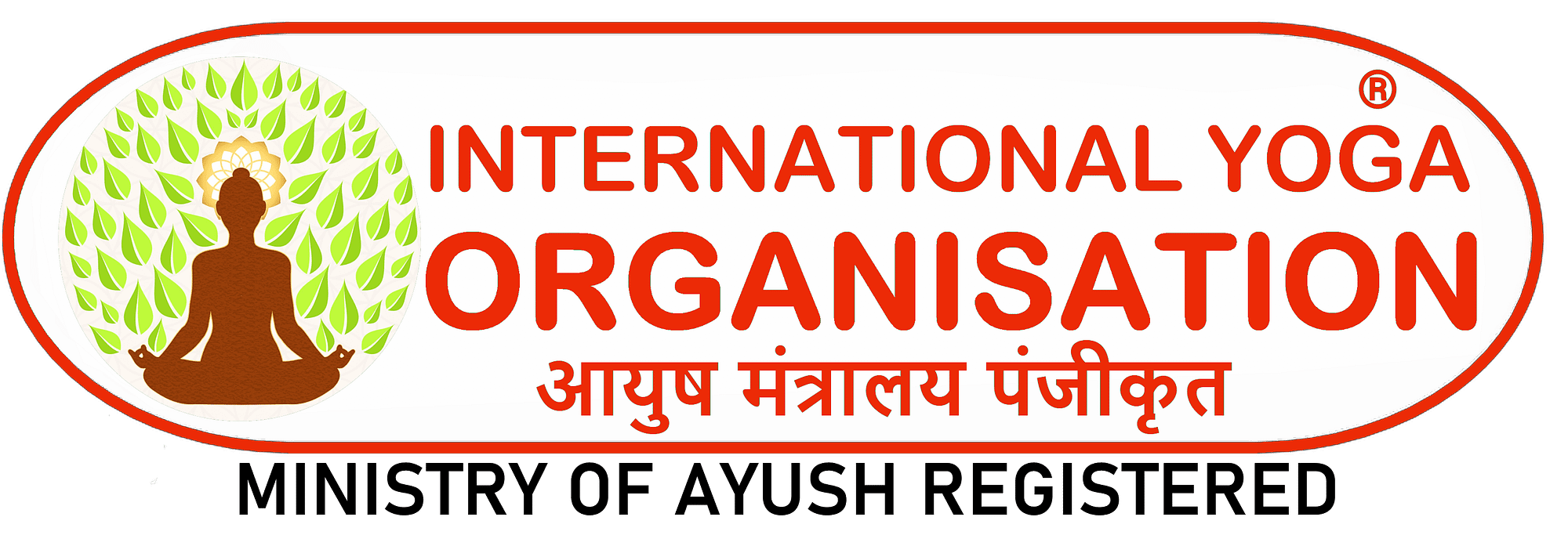
The IYO® Gentle twists to realign your spine

Twists are wonderful ways to clear out your system. They free and realign your spine so that every part of your body works better. Twists massage the internal organs and help the body force toxins out to be carried away for elimination. Prana is allowed to enter the spine and energize it. For balance, always remember to do both sides of a spinal twist. And talk about a fountain of youth—inversions are amazing postures that balance all that standing and walking around right-side-up. Blood flows to the brain, gravity works the other way on every part of your body—in fact, after a good headstand, you’ll feel almost like you’ve spent the day at a spa. So get ready to break out of the old habit of existing upright!
Maricyasana: Spinal Twist
Maricyasana (pronounced MAH-rih-si-AH-sah-nah) gives the spine a nice, lateral stretch, increasing spinal elasticity. The spinal twist also improves side-to-side mobility; decreases backaches and hip pain; contracts and tones the liver, spleen, and intestines; reduces abdominal size; improves the nervous system; prevents calcification at the base of the spine; frees the joints; and rouses your kundalini energy.
Bound Knee Spinal Twist
This variation opens your hips as the spinal twist does, but be sure to keep your back straight and shoulders down. And remember to enjoy this pose. If you aren’t enjoying this pose, skip it for now and try a different spinal twist instead. This is a more advanced twist.
Lying Down Spinal Twist
This variation tones the spine and strengthens the legs. It can also be quite relaxing as gravity helps you out.
1. Begin by lying down, with your knees bent and your palms together in front of your chest, as if in prayer (namaste).
2. Straighten your arms toward the sky, and let your knees and outstretched arms drop (control the movement) to the right.
3. Lift your left arm, and bring it up and over, so it rests on your left side. Your arms are extended like a “t” with your body. Gently turn your head and look at your left hand.
4. Breathe. Enjoy. Relax.
5. Turn your head back to the right, bring your left hand back to your right hand, then gently bring your knees back to center.
6. Repeat on the other side.
Setu Bandha Sarvangasana: Bridge Pose
Setu bandha sarvangasana (pronounced SAY-too BAHN-dah SAHR-vahn-GAH-sahnah) looks like a bridge. Setu means “bridge,” and sarvangasana is composed of sarva (all), anga (limb), and of course, asana (posture). Setu bandha sarvangasana also strengthens the neck and back; tones the entire spine; builds supple wrists; and bathes the pituitary, thyroid, and adrenal glands in blood and other nutrients. The bridge pose helps intestinal function as well. This pose is a good preliminary to the shoulderstand.
Sarvangasana: Shoulderstand
Sarvangasana (pronounced SAHR-vahn-GAH-sah-nah) is a great inversion that stimulates the thyroid gland and the Mercury chakra (located in the throat). It reverses the pull of gravity on your internal organs and reduces the strain on your heart, because your heart doesn’t have to work as hard to pump to the extremities when inverted. The shoulderstand helps with varicose veins; purifies the blood; nourishes the brain, lungs, and heart; strengthens the eyesight; and is a great headache remedy.
Halasana: Plough Pose
Halasana (pronounced hah-LAH-sah-nah) looks like a plough, and hala means “plough.” The plough pose stimulates the spine; strengthens the nervous system; improves the circulation; releases neck tension; relieves constipation; decreases insomnia; promotes mental relaxation; activates the Mercury chakra (in the throat); improves communication; and stimulates the stomach, spleen, small intestine, heart, liver, gall bladder, and kidneys.
Shirshasana: Headstand
Shirshasana (pronounced sher-SHAH-sahn-ah) is probably one of the most famous IYO yoga poses and is considered the king or queen of the Hatha Yoga poses. It stimulates the whole system, improving circulation and strengthening the nervous system, emotions, and brain. Plus, when your body is ready for it, it’s fun! But be sure your body is ready. You must have sufficient arm, shoulder, neck, and stomach strength, plus be well-versed at tadasana , the mountain pose, so you can balance your weight evenly while upside down. Otherwise, your neck will hurt. Too much pressure on your head is not good! Your weight should be supported by your arms, shoulders, and the strength of your abdomen. The strength of these areas is developed in standing poses. Develop yourself on your feet before standing on your head.
Adho Mukha Vrksasana: Handstand
In adho mukha vrksasana (pronounced AHD-hoh MOOK-hah vrik-SHAH-sah-nah), adho mukha means “face down,” and vrksa means “tree,” so just as headstand is mountain pose upside down, handstand is tree pose upside down. To properly
perform this “face-down tree” pose or handstand, your arms must be strong. Practice the downward facing dog pose to develop your arms and prepare your body for the handstand.
The handstand gives you tremendous energy. It strengthens your arms and shoulders, plus gives you all the blood-cleansing effects of inversions. If trying this pose scares you, work with a partner who can spot you. The handstand, however, requires a lot of combined abdominal and upper-body strength. If you’re not strong enough, concentrate on perfecting headstand poses and the downward facing dog pose. Inversions can be incredibly refreshing and invigorating. Twists also keep the spine flexible and youthful, so dive into this yoga fountain of youth … head first!
Now you have some basic (and some advanced) IYO yoga poses under your belt. Having fun? We are! But we have more fun in store, in the way of flow poses, or vinyasa. Read on to learn how to string IYO yoga poses together in a continuous flow.
➤ Spinal twists gently massage internal organs, strengthen the spine, and purify your system.
➤ Inversions—the bridge, shoulderstand, plough, headstand, and handstand— are IYO yoga’s fountain of youth: They keep you young!
➤ Inversions send blood to the brain—that’s brain power!
➤ Avoid inversions if you have high blood pressure, heart problems, or are pregnant.


